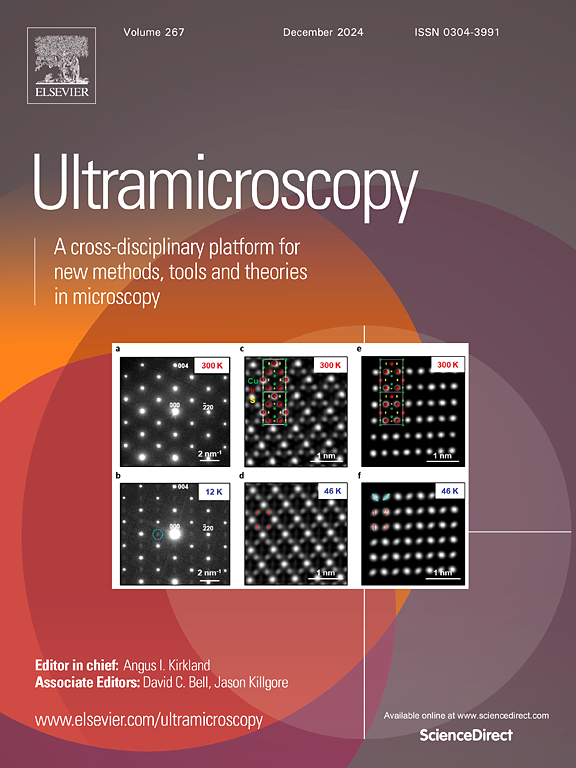aquaDenoising: AI-enhancement of in situ liquid phase STEM video for automated quantification of nanoparticles growth
IF 2
3区 工程技术
Q2 MICROSCOPY
引用次数: 0
Abstract
Automatic processing and full analysis of in situ liquid phase scanning transmission electron microscopy (LP-STEM) acquisitions are yet to be achievable with available techniques. This is particularly true for the extraction of information related to the nucleation and growth of nanoparticles (NPs) in liquid as several parasitic processes degrade the signal of interest. These degradations hinder the use of classical or state-of-the-art techniques making the understanding of NPs formation difficult to access. In this context, we propose aquaDenoising, a novel simulation-based deep neural framework to address the challenges of denoising LP-STEM images and videos. Trained on synthetic pairs of clean and noisy images obtained from kinematic-model-based simulations, we show that our model is able to achieve a fifteen-fold improvement in the signal-to-noise ratio of videos of gold NPs growing in water. The enhanced data unleash unprecedented possibilities for automatic segmentation and extraction of structures at different scales, from assemblies of objects down to the individual NPs with the same precision as manual segmentation performed by experts, but with higher throughput. The present denoising method can be easily adapted to other nanomaterials imaged in liquid media. All the codes developed in the present work are open and freely available.
aquaDenoising:人工智能增强的原位液相STEM视频,用于纳米颗粒生长的自动定量
利用现有技术,液相扫描透射电子显微镜(LP-STEM)采集的自动处理和全面分析尚未实现。这对于提取与纳米颗粒(NPs)在液体中成核和生长有关的信息尤其正确,因为几个寄生过程会降低感兴趣的信号。这些降解阻碍了传统或最先进技术的使用,使人们难以了解NPs的形成。在这种情况下,我们提出了aquaDenoising,这是一种新的基于仿真的深度神经框架,以解决LP-STEM图像和视频去噪的挑战。通过对基于运动学模型的模拟获得的干净和噪声图像的合成对进行训练,我们发现我们的模型能够将金NPs在水中生长的视频的信噪比提高15倍。增强的数据为不同尺度的自动分割和提取结构提供了前所未有的可能性,从物体组合到单个NPs,其精度与专家手动分割相同,但具有更高的吞吐量。这种去噪方法可以很容易地适用于其他纳米材料在液体介质中的成像。在本工作中开发的所有代码都是开放和免费提供的。
本文章由计算机程序翻译,如有差异,请以英文原文为准。
求助全文
约1分钟内获得全文
求助全文
来源期刊

Ultramicroscopy
工程技术-显微镜技术
CiteScore
4.60
自引率
13.60%
发文量
117
审稿时长
5.3 months
期刊介绍:
Ultramicroscopy is an established journal that provides a forum for the publication of original research papers, invited reviews and rapid communications. The scope of Ultramicroscopy is to describe advances in instrumentation, methods and theory related to all modes of microscopical imaging, diffraction and spectroscopy in the life and physical sciences.
 求助内容:
求助内容: 应助结果提醒方式:
应助结果提醒方式:


